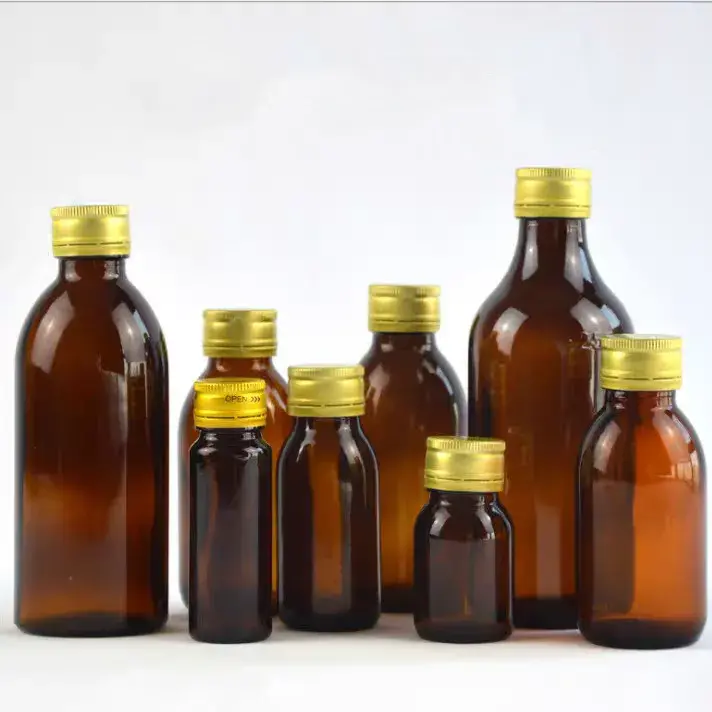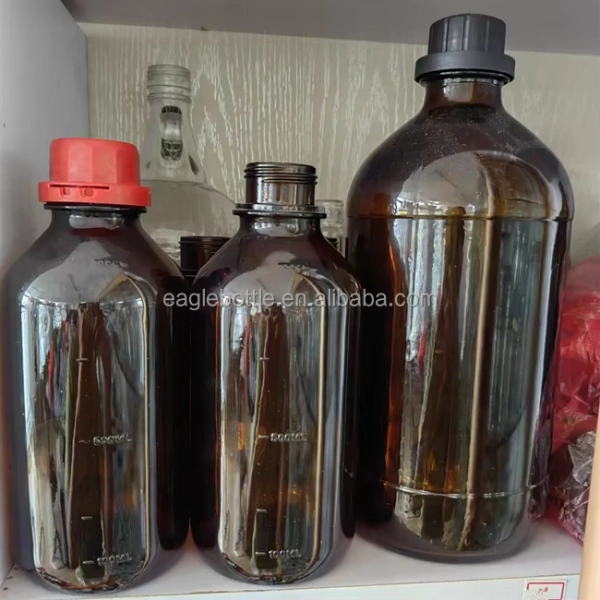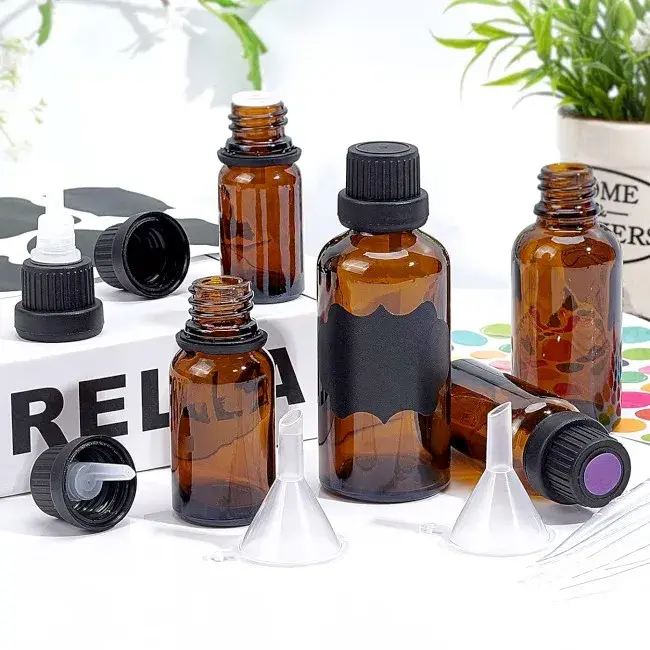Amber glass isn't just about a pleasing, deep color; it's a critical component in the world of science and medicine, a silent guardian for light-sensitive materials. From life-saving pharmaceutical drugs to precise laboratory reagents, the unassuming amber bottle plays an indispensable role in preserving integrity and efficacy. If your business relies on sourcing or utilizing containers for products that react to light, understanding why amber glass is often the non-negotiable standard is paramount. This article will take you on a journey through the science of amber glass, exploring how it's made, its protective mechanisms, its wide-ranging applications, and why we at Eaglebottle, a factory with 7 dedicated production lines, champion it as a vital asset for businesses like yours. We'll uncover how it meticulously safeguards contents, what key factors to consider when choosing a supplier, and its distinct advantages over other packaging materials in demanding scenarios. Join us to discover how selecting the right amber glass can fortify your products, enhance your brand's reputation, and ultimately, benefit your bottom line. This exploration is crucial for anyone looking to store valuable substances safely and effectively.
What Exactly is Amber Glass and How is this Special Glass Made?
Amber glass is a type of soda-lime glass that has a distinctive brownish-yellow amber color. This isn't just a surface coating; the amber colour is integral to the glass itself. The unique hue comes from the addition of specific ingredients during the manufacturing process. When glass is made, the primary components are silica sand (silicon dioxide), soda ash (sodium carbonate), and limestone (calcium carbonate). To achieve the amber color, small amounts of iron, sulfur, and carbon are introduced into the molten glass mixture. These elements, under the high heat of the furnace (often at an elevated temperature), react to form ferric sulfide and polysulfides, which absorb light in the blue and ultraviolet regions of the spectrum, resulting in the characteristic amber glass appearance.
The process of making amber glass bottles and containers is similar to that of clear glass but requires careful control of the added coloring agents and furnace atmosphere. As a factory, we understand that consistency in the amber colour is key, not just for aesthetics but for its functional properties of amber glass. The molten amber glass is then typically molded using either a "press-and-blow" or "blow-and-blow" process to create various shapes and sizes, from small amber glass vials to larger amber glass bottles and jugs. The goal is to produce glass bottles that are not only protective but also robust and suitable for a multitude of applications, especially when needing to store sensitive materials. This specific manufacturing technique ensures that the amber glass provides uniform protection.
Why is the Amber Color So Crucial for Storing Sensitive Materials?
The amber color of this specialized glass is far more than an aesthetic choice; it's a fundamental feature for protection. Many chemical compounds, pharmaceutical ingredients, and even food products are light-sensitive. This means that when they are exposed to light, particularly ultraviolet (UV) and certain wavelengths of visible light, they can degrade, lose potency, or undergo undesirable chemical reactions. The amber colour of the glass acts as a natural filter.
Specifically, amber glass is highly effective at blocking out harmful UV rays and blue light, typically up to around 450 nm. This is the range of the light spectrum that often has the higher energy and is most damaging to light-sensitive substances. By preventing these wavelengths from reaching the contents stored within the amber bottle, the amber glass helps to maintain the stability, efficacy, and shelf life of the product. This protective quality is why amber glass is the preferred choice to store a wide variety of materials, from medicines and essential oils to certain beverages like beer, which can also degrade with light exposure. The ability of amber glass to protect the contents is its primary functional advantage.

How Does Amber Glass Protect Light-Sensitive Compounds from UV Degradation?
The protective mechanism of amber glass against UV degradation lies in its specific light absorption properties. As mentioned, the iron, sulfur, and carbon compounds incorporated into the glass is made formulation create a material that absorbs most light in the ultraviolet and blue portions of the electromagnetic spectrum. UV light, being of shorter wavelength and higher energy than visible light, is particularly potent in initiating chemical reactions that can degrade a compound. This degradation can manifest as loss of potency, changes in color or odor, or the formation of harmful byproducts.
When light attempts to pass through an amber bottle, the chromophores (color-causing compounds) within the amber glass absorb the energy from these specific wavelengths. This prevents the UV rays and a significant portion of blue visible light from reaching the light-sensitive substance stored inside. It's a passive but highly effective barrier. For example, many active pharmaceutical ingredients (APIs) are notoriously sensitive towards sunlight. If these are stored in bottles made of clear glass, they can quickly lose their therapeutic effect. Amber glass significantly mitigates this risk, ensuring the product remains stable and effective for a longer period. This is why amber glass is crucial for items that used to store light-sensitive chemicals. The filtration provided by the amber color is key to preventing degradation.
What are the Key Pharmaceutical Applications of Amber Glass Bottles?
In the pharmaceutical industry, product integrity and patient safety are non-negotiable. Amber glass bottles are widely used to store a vast array of medications precisely because of their protective qualities. Many drugs, both in liquid and solid forms (like tablets and capsules), are light-sensitive. Exposure can lead to a reduction in efficacy, an alteration of the drug's chemical structure, or even the formation of toxic byproducts.
Here are some key pharmaceutical applications:
- Liquid Medications: Syrups, suspensions, and solutions, such as cough syrups or oral antibiotics, are often packaged in amber glass bottles. Check out our amber round empty lean cough syrup bottle for an example of a product designed for this purpose.
- Injectable Drugs: While some injectables come in single-dose vials, larger multi-dose vials for certain medications may utilize amber glass vials to store the light-sensitive compound.
- Tablets and Capsules: Some highly sensitive to light tablets and capsules are stored in bottles made of amber glass to prevent degradation before they reach the patient. This is particularly true for certain vitamins and specialized medications.
- Essential Oils and Herbal Extracts: Many essential oils and plant-based extracts used in pharmaceutical or naturopathic preparations are volatile and prone to degradation from light. Amber glass is the standard for these.
- Reagents for Diagnostic Kits: In-vitro diagnostic (IVD) reagents used in laboratory tests often contain light-sensitive components, making amber glass packaging essential.
The use of amber glass in these applications helps ensure that the medication a patient receives is safe and effective, maintaining its intended chemical composition until the point of use. The inert nature of glass also prevents any unwanted interaction between the container and the pharmaceutical substance.
Why are Amber Glass Reagent Bottles a Staple in Every Modern Laboratory?
A laboratory is a place of precision, and the integrity of chemical reagents is fundamental to reliable experimental outcomes. Amber glass reagent bottles are ubiquitous in laboratory settings for several compelling reasons, primarily centered around protecting the chemicals and solutions stored within. Many reagents are light-sensitive chemicals; their chemical structure and reactivity can be altered upon exposure to light, leading to inaccurate test results or failed experiments.
The amber color of the reagent bottle shields the contents from UV and blue light, preventing photo-degradation of the reagent. This is critical for maintaining the purity and concentration of the compound. For example, silver nitrate solutions, commonly used in laboratories, will decompose if exposed to light. Storing them in an amber bottle is standard practice. Beyond light protection, glass bottles are generally preferred in a laboratory because glass is largely inert. This means it doesn't react with most chemicals, preventing contamination of the reagent or leaching of substances from the container into the chemical being stored. As a manufacturer, we offer options like the amber chemical glass reagent bottle for laboratory, which is designed to meet these stringent laboratory needs. The durability and reusability of amber glass reagent bottles also contribute to their popularity as essential lab equipment.

Are Amber Glass Containers Suitable for Storing All Types of Chemicals?
While amber glass containers are excellent for a vast majority of chemicals, especially those that are light-sensitive, there are a few exceptions or considerations. Amber glass, like most soda-lime glass, is highly resistant to most acids, organic solvents, and neutral solutions. This makes it ideal for storing a broad spectrum of laboratory reagents and pharmaceutical compounds.
However, there are specific substances for which glass, including amber glass, might not be the first choice, or requires special types of glass:
- Hydrofluoric Acid (HF): This acid is an exception as it attacks silica, the main component of glass, causing it to etch and dissolve. HF is typically stored in plastic containers (usually polyethylene or Teflon).
- Strong Alkaline Solutions: Highly concentrated and hot alkaline solutions can slowly etch glass surfaces over time. While amber glass can handle mild or cold alkaline solutions well, for long-term storage of very strong bases at elevated temperature, specialized plastic bottles or borosilicate glass (which has higher chemical resistance) might be preferred.
- Light-Insensitive, Highly Reactive Chemicals Requiring Specific Plastic Properties: Some chemicals, though not necessarily light-sensitive, might be better stored in plastic due to shatter-resistance needs in high-traffic areas, or if a specific type of plastic offers better barrier properties against gas permeation for that particular substance.
It's always crucial to consider the specific chemical being stored and consult Safety Data Sheets (SDS) for recommended storage materials. However, for the overwhelming majority of light-sensitive chemicals encountered in pharmaceutical and laboratory work, amber glass containers provide an optimal balance of protection, inertness, and durability. The primary benefit of amber glass remains its ability to store and protect from light.
Amber Glass vs. Clear Glass and Plastic Bottles: What are the Advantages?
When choosing packaging, especially for sensitive products, the material matters immensely. Let's compare amber glass to its common alternatives: clear glass and plastic bottles.
Amber Glass vs. Clear Glass:
- Light Protection: This is the most significant advantage. Amber glass blocks UV and blue light; clear glass offers minimal protection, making it unsuitable for light-sensitive substances that might degrade.
- Inertness: Both are highly inert, meaning they don't react with or leach chemicals into the contents. This is a shared advantage over many plastics.
- Visibility: Clear glass allows for easy inspection of contents. While this is a downside for light-sensitive materials, it can be an advantage for others. However, the level of fill in an amber bottle can still be discerned.
Amber Glass vs. Plastic Bottles:
- Light Protection: While some plastic bottles can be made opaque or with UV inhibitors, amber glass inherently provides broad-spectrum UV protection due to its composition. The amber color is a reliable filter.
- Inertness & Leaching: Glass is generally more inert than plastic. Some plastics can leach chemicals (e.g., plasticizers, monomers) into the contents, especially with certain solvents or over long periods. This is a major concern for pharmaceutical and food products. The risk of contamination is lower with amber glass.
- Permeability: Glass is impermeable to gases and moisture. Some plastics are permeable to oxygen or other gases, which can degrade the contents. Amber glass offers a superior barrier.
- Temperature Stability: Glass can withstand a wider range of temperatures, including sterilization processes like autoclaving (though rapid temperature changes should be avoided). Many plastics have lower melting points or can deform.
- Durability & Reusability: Glass is rigid and doesn't scratch as easily as plastic. Amber glass bottles can often be reused (after proper cleaning and sterilization), making them more sustainable in some contexts.
- Weight & Breakability: Plastic bottles are lighter and more shatter-resistant, which can be an advantage in shipping and handling. However, the robustness of glass is often preferred for product integrity. Some products are packaged in plastic bottles for these reasons, but if light sensitivity or inertness is paramount, amber glass is superior. Chemicals that could break down plastic should always be stored in bottles made of glass.
The choice often comes down to the specific needs of the substance being stored. If light protection and chemical inertness are top priorities, amber glass frequently emerges as the superior option.

Understanding Different Amber Glass Grades for Specific Laboratory Needs Systems?
While "amber glass" refers to the color and its light-filtering properties, the underlying glass composition can vary, impacting its suitability for different laboratory needs systems. The most common type of glass used for amber glass bottles is Type III soda-lime glass. This is perfectly adequate for most general-purpose laboratory storage, especially for dry powders, many solvents, and samples that are not extremely sensitive to minor ionic exchange.
However, for more demanding laboratory applications, such as storing highly sensitive analytical standards, parenteral (injectable) pharmaceutical preparations, or for applications requiring high chemical durability and thermal shock resistance, other types of glass, which can also be made in amber color, might be considered:
- Type I Borosilicate Glass (can be amber): This glass has a higher chemical resistance and can withstand greater thermal stress than soda-lime glass. It exhibits very low levels of ion leaching, making it ideal for sensitive solutions, storing acids, and applications where minimal interaction between the container and contents is critical. If you need to store a particularly aggressive reagent, an amber bottle made from borosilicate glass is often the best choice.
- Type II Treated Soda-Lime Glass (can be amber): This is soda-lime glass that has undergone a surface treatment (often with sulfur) to reduce alkali leaching from the glass surface. It's an improvement over Type III for certain aqueous solutions, particularly if they are to be stored for extended periods or at slightly elevated temperature.
When sourcing amber glass containers for specific laboratory needs, it's important to discuss the intended application with your supplier. As a factory, we at Eaglebottle can provide guidance and ensure you receive amber glass that meets the appropriate quality and material specifications for your laboratory needs systems. For instance, our wide mouth amber glass tablet jar options are typically Type III, suitable for many oral pharmaceutical products.
How Does Using Amber Glass Impact Product Efficacy and Shelf Life?
The primary impact of using amber glass on product efficacy and shelf life is overwhelmingly positive, especially for light-sensitive products. By preventing photo-degradation, amber glass helps to:
- Maintain Potency: Active pharmaceutical ingredients (APIs), vitamins, and sensitive reagents retain their intended strength and concentration for longer when protected from light. If a substance were to degrade, its effectiveness would diminish.
- Preserve Chemical Integrity: Amber glass minimizes light-induced chemical reactions that could alter the compound's structure, leading to ineffective or even harmful byproducts. The amber bottle ensures the substance stored within remains as intended.
- Extend Shelf Life: By slowing down or preventing degradation, amber glass contributes directly to a longer, more stable shelf life. This means products can be stored for more extended periods without loss of quality, reducing waste and cost.
- Ensure Consistent Quality: Products stored in bottles made of amber glass are more likely to maintain their original color, odor, and physical characteristics. This consistency is crucial for consumer confidence in pharmaceutical and cosmetic products, and for reliability in laboratory reagents.
- Reduce Risk of Adverse Effects: For pharmaceutical products, preventing degradation is not just about efficacy but also safety. Degraded compounds can sometimes become more toxic or cause unexpected side effects. The protective and inert qualities of amber glass mitigate this risk of contamination or alteration.
Essentially, by creating a stable environment shielded from damaging light, amber glass plays a critical role in ensuring the safety and effectiveness of the contents from light throughout their intended lifespan. It's a fundamental choice for storing materials that might otherwise degrade or undergo undesirable changes.
What Quality Inspections and Certifications Matter for Amber Glass Reagent Bottles?
For procurement officers like Mark Thompson, who prioritize quality and compliance, understanding the relevant quality inspections and certifications for amber glass reagent bottles and other pharmaceutical packaging is crucial. When sourcing from suppliers, especially internationally, these factors provide assurance.
Key considerations include:
- Material Composition (Glass Type): Verification that the amber glass meets the specified type (e.g., Type I, Type III soda-lime glass). This can involve laboratory analysis.
- Light Transmission Testing: This is a critical test for amber glass. Spectrophotometric analysis ensures the glass bottles effectively block UV light and relevant portions of the visible spectrum (typically testing for transmission limits below specific percentages at wavelengths up to 450 nm or as specified by pharmacopeias like USP/EP). This confirms the amber color is functional.
- Dimensional Accuracy: Ensuring the reagent bottle dimensions (height, diameter, neck finish, capacity) are within specified tolerances. This is vital for compatibility with caps, closures, and automated filling lines.
- Physical & Mechanical Strength: Tests for thermal shock resistance, internal pressure resistance, and impact resistance ensure the amber bottle is durable enough for its intended use and handling.
- Chemical Resistance: For certain applications, especially with pharmaceutical products or aggressive reagents, tests for hydrolytic resistance (water attack) or acid/alkali resistance may be required to ensure the glass doesn't leach or degrade.
- Visual Inspection: Checking for defects such as cracks, chips, bubbles (seeds), stones, blisters, and inconsistencies in the amber colour.
- Certifications:
- ISO 9001: Indicates the manufacturer has a quality management system in place.
- Pharmacopeia Compliance (USP, EP, JP): For pharmaceutical packaging, compliance with standards set by the United States Pharmacopeia (USP), European Pharmacopeia (EP), or Japanese Pharmacopeia (JP) is often required. These standards detail tests for glass types and light transmission.
- FDA Compliance: For food and drug contact materials, adherence to FDA regulations (e.g., 21 CFR) is necessary in the USA. This often involves ensuring the glass is GRAS (Generally Recognized As Safe).
- Child-Resistant Certifications (if applicable): If the amber bottle is paired with a child-resistant closure (CRC), the entire package (bottle and cap) must pass specific testing protocols (e.g., CPSC standards in the US, ISO 8317).
As a factory, Eaglebottle understands the importance of these quality checks. We conduct rigorous internal inspections and can provide relevant certifications to assure our customers that our amber glass products, including Black UV Violet Jars for ultimate protection when extreme protection is needed, meet high standards. When a client is given a bottle, they should have confidence in its quality.
Partnering with Your Amber Glass Supplier: Tips for Smooth Procurement
For company owners and procurement officers like Mark Thompson, finding a reliable amber glass supplier is key to a smooth supply chain. Sourcing from developing countries like China can offer competitive pricing, but it's essential to navigate potential challenges effectively. Here are some tips, drawing from our experience as a supplier (Eaglebottle) and understanding buyer concerns:
-
Clear Communication is Paramount:
- Be Specific: Clearly define your requirements for the amber bottle or reagent bottle: size, capacity, neck finish, glass type, quantity, and any specific quality standards or certifications (e.g., USP, light transmission).
- Language: While English is common in international trade, ensure your supplier's sales representatives are proficient. Misunderstandings can lead to errors. At Eaglebottle, we prioritize clear communication.
- Response Time: A responsive supplier can address queries and issues promptly. Inefficient communication is a major pain point.
-
Verify Quality and Certifications:
- Request Samples: Always get samples of the amber glass containers before placing a large order to assess quality firsthand.
- Ask for Test Reports & Certifications: Don't just take a supplier's word. Request copies of relevant test reports (e.g., light transmission, chemical resistance) and certifications (ISO, FDA compliance). Be wary of "certificate fraud" – verify authenticity if possible.
- Factory Audits: For significant orders, consider a factory audit (either in-person or via a third party) to assess production capabilities and quality control processes. We welcome such visits at Eaglebottle.
-
Discuss Logistics and Lead Times Thoroughly:
- Production Lead Time: Get realistic estimates. Factor in potential delays.
- Shipping Terms (Incoterms): Understand who is responsible for what (e.g., FOB, CIF).
- Shipment Delays: This is a common pain point. Discuss contingency plans. A good supplier will be transparent about potential issues and work to mitigate them. The maintenance of chemicals' integrity depends on timely delivery of appropriate amber glass packaging.
-
Understand Payment Methods and Terms:
- Secure common international payment methods (e.g., Telegraphic Transfer T/T, Letter of Credit L/C).
- Be clear on payment schedules.
-
Build a Relationship:
- A long-term partnership with a trustworthy amber glass supplier can lead to better service, more flexibility, and proactive problem-solving. We aim to be more than just a vendor; we strive to be a partner in your success. When we give amber glass products to our clients, we provide a promise of quality.
Addressing these points proactively can help procurement officers like Mark avoid common pitfalls and ensure a steady supply of high-quality amber glass bottles such as our versatile amber glass boston bottles. The goal is to store your valuable products with confidence.
Key Takeaways: The Enduring Value of Amber Glass
Amber glass remains an indispensable material across various industries, prized for its unique combination of protection, inertness, and reliability. Its ability to shield light-sensitive contents from harmful UV rays and blue light is critical for maintaining the efficacy and stability of everything from life-saving pharmaceutical drugs to precise laboratory reagents.
Here’s a quick recap of why amber glass is so important:
- Superior Light Protection: The distinct amber color is not just aesthetic; it actively filters out damaging light up to 450 nm, preventing degradation of light-sensitive substances.
- Chemical Inertness: Amber glass does not react with most chemicals, ensuring that the product stored within remains pure and uncontaminated. It won't leach harmful substances into the contents, unlike some plastic bottles.
- Versatility in Application: From pharmaceutical syrups and tablets in an amber bottle to critical reagents in a laboratory, amber glass containers serve a multitude of purposes.
- Enhanced Product Stability: By protecting against light and offering an inert environment, amber glass helps extend shelf life and maintain the intended efficacy of the compound.
- Quality and Compliance: Reputable manufacturers adhere to stringent quality controls and can provide certifications (e.g., USP, ISO) to guarantee the performance of their amber glass bottles.
- A Trusted Standard: Decades of use have solidified amber glass as the gold standard for packaging light-sensitive materials, offering a reliable and proven solution. Bottles are commonly used for this purpose.
As Allen from Eaglebottle, with our extensive experience in manufacturing high-quality glass bottles and containers, we understand the critical role that packaging plays. Choosing the right container, like an amber bottle for a light-sensitive reagent or pharmaceutical, is a decision that impacts product quality, safety, and brand reputation. We are committed to providing our B2B partners with amber glass solutions that meet the highest standards, ensuring your products are well-protected and effectively stored.
Post time: 05-20-2025







